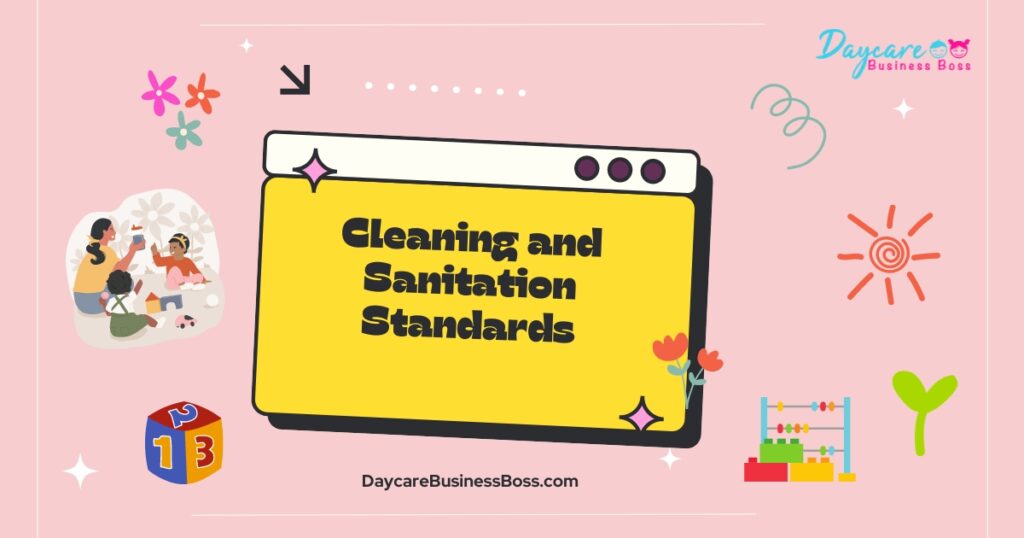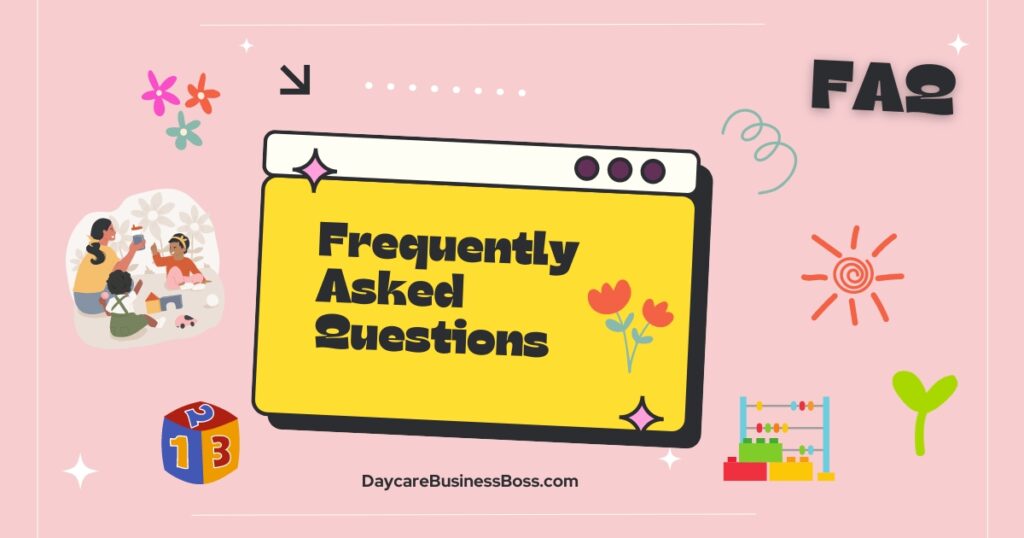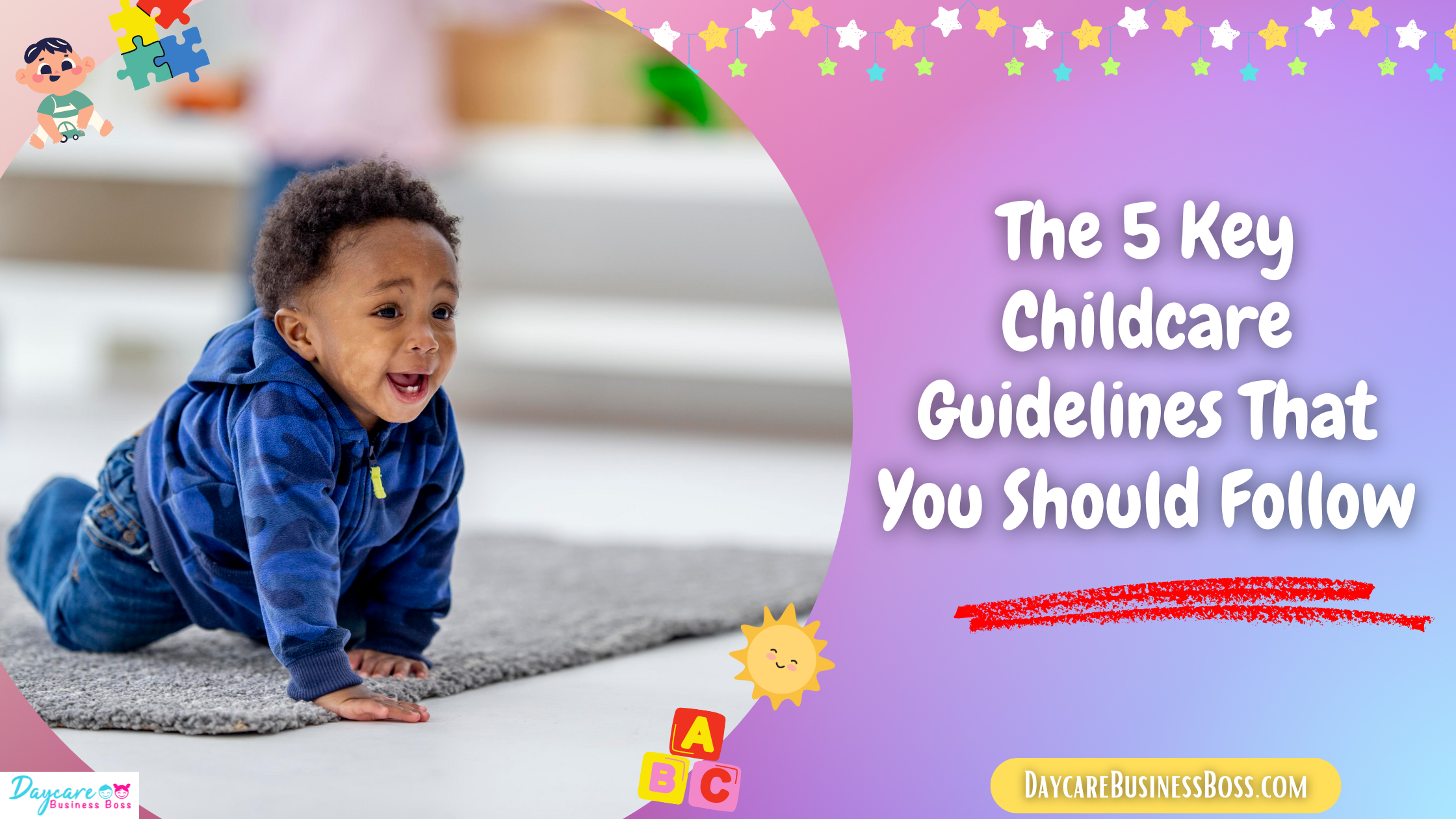Opening a daycare involves more than just finding a facility, signing up children for your early childhood program, and opening up your doors after a few months of preparation.
Beginning a daycare can take many months of preparation because there are childcare guidelines that you must follow as you operate your facility.
Follow these childcare guidelines as you run your daycare facility.
- The teacher to child ratio set by the government.
- Zoning laws for your daycare building.
- Cleaning and sanitation standards.
- Health and safety mandates.
- Fair tuition payment plans.
These are the 5 key guidelines that will keep your daycare running legally and smoothly. Parents will feel reassured that their children are safe and well cared for while they attend your facility. State representatives from the Department of Health and your local city’s fire department will be satisfied that you are operating responsibly within the state and national mandates.
1. The Teacher to Child Ratio Set by the Government
According to the United States Office of Personnel Management, there are teacher to child ratios that are set forth by the government to ensure that children are properly cared for across all age groups. (https://www.opm.gov/policy-data-oversight/worklife/reference-materials/child-care-resources-handbook/#:~:text=Staff%2FChild%20Ratios%20at%20Child%20Care%20Centers&text=For%20infants%20(birth%2D15%20months,children%20(1%3A4)
The teacher to child ratio mandates are as follows:
- 1:3 for infants age birth to 15 months (1 teacher for every 3 infants) in a group of 6 infants.
- 1:4 for infants age birth to 15 months (1 teacher for every 4 infants) in a group of 8 infants.
- 1:3 for toddlers ages 12 months to 28 months (1 teacher for every 3 toddlers) in a group of 6 toddlers.
- 1:4 for toddlers ages 12 months to 28 months (1 teacher for every 4 toddlers) in a group of 8 toddlers and above.
- For toddlers ages 21 months to 36 months, the teachers should take half the children. So in a group of 8, it’s 1:4, in a group of 10, it’s 1:5, and so on.
- For toddlers and young kids ages 2 ½ and older, 2 teachers in a classroom split up responsibility for kids down the middle if there is a large group.
- 1:8 for 16 children
- 1:9 for 18 children
Why is it important to follow the mandated teacher to child ratios?
It’s important to follow the mandated teacher to child ratios set forth by the United States government to achieve the following goals:
- Following the law, so that you pass your state daycare audits.
- Encouraging a more personalized attention for all students with smaller class sizes and teachers responsible for a set amount of children.
- Reassuring any disagreements or fights amongst the children are nipped in the bud immediately, so as not to escalate into a huge accident report.
2. Zoning Laws for Your Daycare Building
When you purchase your daycare facility, your local fire department will come in and zone the building. You will be given the maximum amount of occupants that can be in one building at a time.
Once you have been given this maximum occupancy, you must post it in a prominent location in your daycare facility. This is best posted nearby your front check-in and checkout desk.
Say for example that the fire department has zoned your building and the maximum number of occupants is 114 people. You have 5 classrooms each with 1 teacher and 1 aide. That’s 10 people. Including yourself, that makes 11 people on the premises at the start of the day.
Say that you have 8 children in each of the 5 classrooms. That means another 40 occupants added to the total. That makes 51 occupants of the 114 maximum allowed in the building at once.
This means that 63 more occupants are allowed into the building. If any of your classrooms receive a large number of additional students, you may have to hire more teachers and aides to help out with the teacher to child ratio. When doing this, make sure you are setting limits to be sure that you do not over hire or enroll too many children in your facility that will make you go over your maximum allowed occupants.
What ways can I be sure that I stay within the maximum limit of occupants?
- Always check to be sure you are abiding by the teacher to child ratio.
- Once you have reached the total that is 10 people less than the maximum allowed in your building, put enrollment on hiatus for a while.
- Keeping this small gap allows for parents to come in to pick up their children or conference with the Director or a teacher during business hours.
- This gap also allows for any state or local representatives or vendors visiting your facility enough room to do their assigned work.
- If enrollment is experiencing an overwhelming demand, start a waiting list, so that you can still serve your community when your facility has enough space.
3. Cleaning and Sanitation Standards

Maintaining strict cleaning and sanitation standards for your facility is for the well being of all students, staff, and teachers. Thoroughly cleaning classrooms, bathrooms, cafeteria, playing areas in the building, and playground equipment outside will give parents a peace of mind that their children are well taken care of in a clean and safe environment during their time at your facility.
Cleaning and Sanitation Checklist
Follow this checklist to keep your daycare neat, clean, and sanitized at the end of every day your facility operates.
Bathrooms
- Clean and disinfect the bathroom toilets, sinks, and floors.
- Make sure hand soap is available in all bathrooms.
- In bottom cabinets, keep a stock of disinfecting hand wipes to quickly clean up messy toddler hands.
- Be sure all bathroom cabinets are locked tight, so children do not have access during potty time.
Classrooms
- Clean and sanitize young children’s toys with baby safe disinfectant.
- Disinfect art supplies used to make arts and crafts.
- Make sure children have their own assigned coloring utensils (color pencils, crayons, markets, etcetera), so no germs cross between the students during art time.
Front Desk
- Sanitize the check-in and check-out desk.
- Pens that parents use to sign children in and out of the facility.
- Clipboards that house the sign in/sign out papers.
- Telephones.
- Use window cleaner on your front windows and doors every few days.
Cafeteria and Kitchen
- Thoroughly clean kitchens (if applicable) and eating areas.
- Clean and sanitize cooking utensils and pots and pans.
- Sweep and mop the floors.
- Use lysol on tables and chairs in the cafeteria
4. Health and Safety Mandates
Following health and safety mandates will keep the children safe from harm during their time at your facility. They will also ensure that your teachers, aides, and staff are operating professionally and within state and national daycare standards.
Health Mandates
Health mandates to follow include:
- Sending a child home for 24 hours or more if he or she experiences a fever of 100.3 degrees Fahrenheit or displays other sick symptoms such as:
- A bout of diarrhea during diaper change time.
- Jaundice which is yellowing of the skin or eyes.
- Chicken pox.
- Taking regular temperatures of a child exhibiting illness symptoms.
- Notifying parents immediately when a child has any of the illness symptoms that means he or she must be sent home immediately.
- Keeping the child separate from the rest of the classroom activities until a parent or guardian arrives to pick him or her up from daycare.
Safety Mandates
Safety mandates to follow include:
- Monitoring children closely at all times during classroom instruction and playground time.
- Writing up accident reports if:
- A child slips and falls.
- One child bites or hurts another child in any way that leaves a mark.
- An unforeseen incident occurs in the classroom like if something falls on a child unexpectedly.
- If during the summer and there is a swim activity, use flotation devices.
- If taking a walk during the cold weather with the children, have them all wear layers.
- Keep young children together in a line with daycare approved rope with handles for the children to hold on to while taking a walk outside.
- One teacher should be in front of the line.
- One teacher should be in the back of the line.
- If there is a third teacher, he or she should be in the middle of the line.
- All teachers watch the children closely while walking with this rope.
Check out our article HERE on daycare cameras!
5. Fair Tuition Plans
Institute fair tuition plans, so that parents have the time and resources that they need to pay their tuition bills. Partner with the local daycare funding program in your state to get qualifying parents a tuition cut on their monthly bill.
Set a specified due date for parents to pay their tuition bill. This can be the date that his/her child started daycare. For example, if Susie Smith started daycare on December 12th, you can make the due date on the 12th of every month.
However, you can take it a step further and discuss with parents which date works best for them. Many times, bills fall around the same time each month, which makes it challenging for some parents to pay them off, if they do not fall around their pay days.
Give parents a grace period to pay the tuition bill. Going with the same example, if the tuition bill is due on the 12th of every month, allow the parent until the 17th of each month as a grace period before a late fee is imposed.
If it becomes so that a parent is about to fall a month behind on the tuition bill, have a conference with him or her. Ask the parent what can be paid now and come up with a payment plan to pay off the additional balance over the course of the next 2-4 weeks to bring the account up to current.
Conclusion
Following these 5 key guidelines will reassure that your daycare facility is operating legally, comfortably, and safely.
Give your daycare facility’s enrolled children the gift of a clean and organized area to learn, grow, and develop into moral and smart youth!
Related Questions

1. How should I collect daycare tuition?
Collect daycare tuition via cash, credit card, and debit card at a payment terminal in your daycare. Take it a step further and start to accept payments online by using ProCare, Brightwheel, or another child care software system.
2. Can I have 3 teachers in one classroom?
If you have a lower number of classrooms, but a lot of children of a certain age group inside one of them, consider hiring an aide to help with splitting up the students into smaller groups.
Please note: This blog post is for educational purposes only and does not constitute legal advice. Please consult a legal expert to address your specific needs.
To learn more on how to start your own daycare checkout my startup course and documents here.

Meet Shawn Chun: Entrepreneur and Childcare Business Fan.
I’m a happy individual who happens to be an entrepreneur. I have owned several types of businesses in my life from a coffee shop to an import and export business to an online review business plus a few more and now I create online daycare business resources for those interested in starting new ventures. It’s demanding work but I love it. I do it for those passionate about their business and their goals. That’s why when I meet a childcare business owner, I see myself. I know how hard the struggle is to retain clients, find good employees and keep the business growing all while trying to stay competitive.
That’s why I created Daycare Business Boss: I want to help childcare business owners like you build a thriving business that brings you endless joy and supports your ideal lifestyle.

